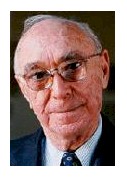| Constructivist Instruction Theoretical
foundation Contributions
|
The Contributions of Jersome Bruner: Learning as Discovery Like Piaget, Jerome Bruner was interested in children's stages of cognitive development. Bruner described development in three stages (Gagne & Berliner, 1988): 1. Enactive stage (from birth to about age three). Children perceive the environment solely through actions that they initiate. They describe and explain objects solely in terms of what they can do with them. Children cannot tell how a bicycle works but can show how it works. Showing and modeling have more learning value than telling for children at this stage. 2. Iconic stage (from about age three to about age eight). Children can remember and use information through imagery (mental pictures or icons). Visual memory increases and children can imagine or think about actions without actually experiencing them. Decisions are still made on the basis of perceptions, rather than language. 3. Symbolic stage (from about age eight). Children begin to use symbols (words or drawn pictures) to represent people, activities, and things. They have the ability to think and talk about things in abstract terms. They can also use and understand what Gagne would call "defined concepts." For example, they can discuss the concept of toys and identify various kinds of toys, rather than defining them only in terms of toys they have seen or handled. They can better understand mathematical principles and use symbolic idiom such as "Don't cry over split milk." Bruner also identified six indicators or "benchmarks" that revealed cognitive growth or development (Gage & Berliner, 1988, pp. 121-122; Owen, Froman, & Moscow, 1981, p.49; ). He said that children 1. Respond to situations in varied ways, rather than always in the same way 2. Internalize events into a "storage system" that corresponds to the environment 3. Have increased capacity for language 4. Can interact systematically with a tutor (parent, teacher, or other role model) 5. Use language as an instrument for ordering the environment 6. Have increasing capacity to deal with multiple demands. |
 Theoretical
foundation-Bruner
Theoretical
foundation-Bruner